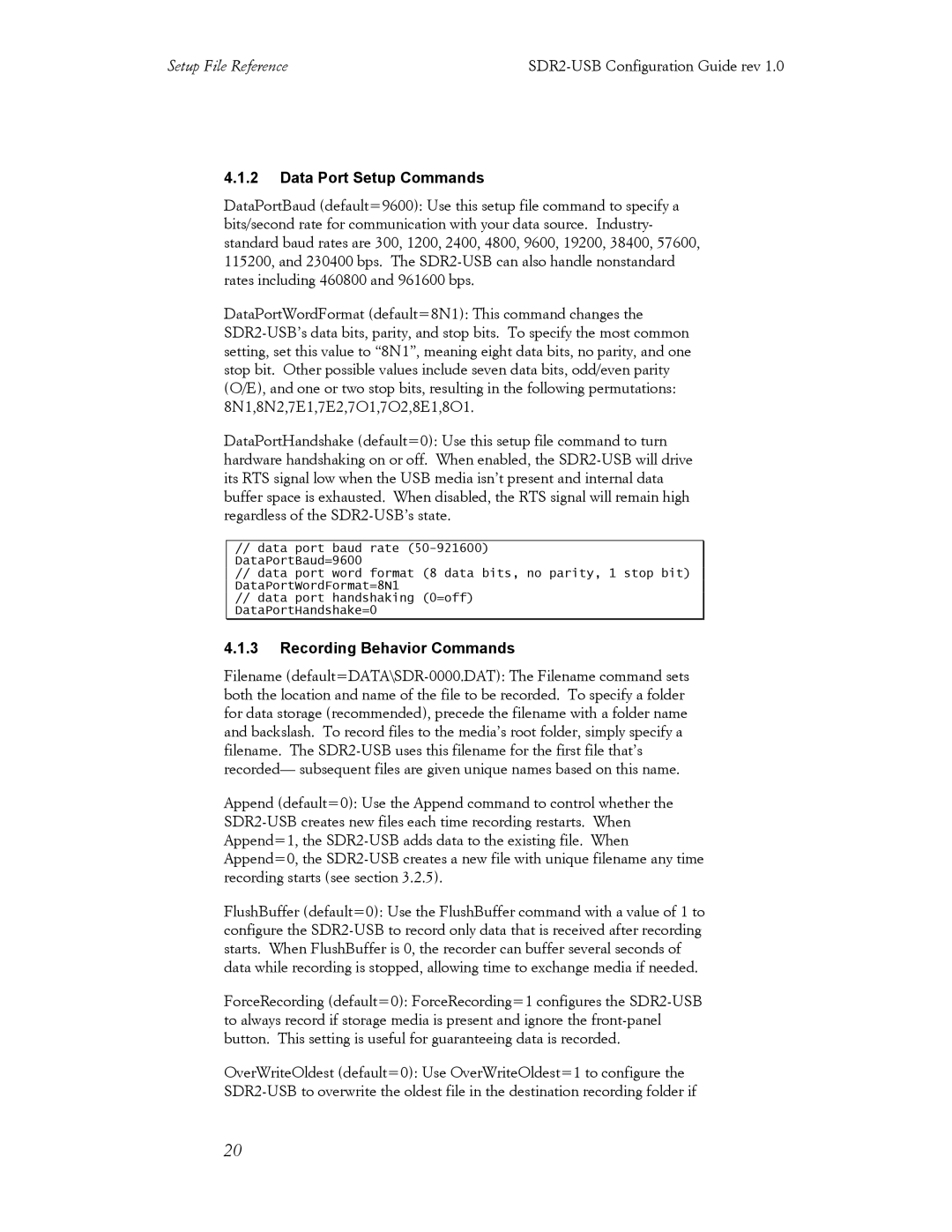4.1.2Data Port Setup Commands
DataPortBaud (default=9600): Use this setup file command to specify a bits/second rate for communication with your data source. Industry- standard baud rates are 300, 1200, 2400, 4800, 9600, 19200, 38400, 57600, 115200, and 230400 bps. The SDR2-USB can also handle nonstandard rates including 460800 and 961600 bps.
DataPortWordFormat (default=8N1): This command changes the SDR2-USB’s data bits, parity, and stop bits. To specify the most common setting, set this value to “8N1”, meaning eight data bits, no parity, and one stop bit. Other possible values include seven data bits, odd/even parity (O/E), and one or two stop bits, resulting in the following permutations: 8N1,8N2,7E1,7E2,7O1,7O2,8E1,8O1.
DataPortHandshake (default=0): Use this setup file command to turn hardware handshaking on or off. When enabled, the SDR2-USB will drive its RTS signal low when the USB media isn’t present and internal data buffer space is exhausted. When disabled, the RTS signal will remain high regardless of the SDR2-USB’s state.
//data port baud rate (50-921600) DataPortBaud=9600
//data port word format (8 data bits, no parity, 1 stop bit) DataPortWordFormat=8N1
//data port handshaking (0=off)
DataPortHandshake=0
4.1.3Recording Behavior Commands
Filename (default=DATA\SDR-0000.DAT): The Filename command sets both the location and name of the file to be recorded. To specify a folder for data storage (recommended), precede the filename with a folder name and backslash. To record files to the media’s root folder, simply specify a filename. The SDR2-USB uses this filename for the first file that’s recorded— subsequent files are given unique names based on this name.
Append (default=0): Use the Append command to control whether the SDR2-USB creates new files each time recording restarts. When Append=1, the SDR2-USB adds data to the existing file. When Append=0, the SDR2-USB creates a new file with unique filename any time recording starts (see section 3.2.5).
FlushBuffer (default=0): Use the FlushBuffer command with a value of 1 to configure the SDR2-USB to record only data that is received after recording starts. When FlushBuffer is 0, the recorder can buffer several seconds of data while recording is stopped, allowing time to exchange media if needed.
ForceRecording (default=0): ForceRecording=1 configures the SDR2-USB to always record if storage media is present and ignore the front-panel button. This setting is useful for guaranteeing data is recorded.
OverWriteOldest (default=0): Use OverWriteOldest=1 to configure the SDR2-USB to overwrite the oldest file in the destination recording folder if

